From the President's Desk- a Living History of PACES
The Pediatric and Congenital Electrophysiology Society is still a young organization, but not everyone who has been involved in the formation and development of our Society is still with us. The ongoing evolution of our Society has been rapid and the growth in membership, spectacular. We have welcomed hundreds of new members who were not around for the early days, when meetings primarily consisted of 20 or 30 people in a room drinking beer. We've asked each of our Past Presidents, before they stop answering emails, to share with us their memories and their perspectives from their time in PACES leadership. For some current PACES members, this will bring back pleasant memories, and for others, this will provide a window into where we've been, and perhaps where we are going. We hope to continuously update this page as Presidents rotate into the Past President role and have the opportunity of adding their memories to this living history
-George Van Hare and Ed Walsh, PACES History Committee, 2022
1988, Woody Benson
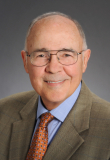

1989, Grace Wolff
1990, John Kugler
The AHA in Miami probably in the fall of 1978 was the earliest I remember attending an off-site meeting of pediatric cardiologists who called themselves electrophysiologists and some were pediatric cardiologists interested in heart rhythm. The meeting was organized by Heinz Gelband and Grace Wolff, in part because they were able to hold the meeting at their department in Miami. I was a third-year fellow with Tim Garson at TCH/Baylor dedicating our year in EP as Paul Gillette’s first EP fellows. I have vivid memories of sitting around the table in a relatively small conference room, listening to the founders of our specialty – Gelband, Wolf, Gillette, Dick, Benson come to mind. I don’t remember a formal agenda, but I do recall the discussion involved at length, a problem of great concern that haunted us then and subsequently for decades: sudden death in postop tetralogy of Fallot patients. We discussed the idea of forming a multi – center research group to study the problem, pool data and learn from our collective experience. I recall that it was inspirational because it was a group of like-minded people seeking answers to important clinical problems. That inspirational motivated feeling never changed during my nearly 40 years involved with this collegial group.
I don’t recall the steps or details in the mid 1980s of when or how we decided that our Pediatric EP Society needed to be more formally organized. (Mac Dick spearheaded the formation of a 501(3)(c) but that was much later in 1994.) Ultimately, we decided that we needed a leadership team of elected members, and the first president Woody Benson was elected in 1988. Three years later in 1990, I was honored to be the Pediatric Ep Society’s third president. In the early days, the term was 1 year (fortunately!). I am uncertain as to what this leadership role played in the formation of the Pediatric RF Registry or vice versa. However, I do have vivid memories of going to the bar at the Peabody Hotel in Orlando after our 1990 evening Pediatric EP Society meeting (~50 attendees?) at the annual AHA scientific sessions where several of us continued the discussion at our earlier evening meeting to explore forming a multi-center registry. I had a drink or two and volunteered our division of Pediatric Cardiology in Omaha to be the coordinating center. I was blessed with a tremendous team in our division composed of a computer savvy data person (Gary Felix), a colleague who was statistical genius (David Danford) and a nurse (Kris Houston) who was a great team player and arduously entered every data element. I don’t remember any formal vote in the Peabody bar but there were no dissenters at the bar barring me from carrying out the volunteer position of organizing the Pediatric RF Registry within the Pediatric EP Society. Upon my return to Omaha, our team drafted a data form, set up the computer programs. These were sent out to Pediatric EP Society members for editing and we were ready for the first ablation procedure to be entered about 6 weeks later on January 1, 1991. Eight years and 6700+ procedures later, after a confidential data reporting system to participating centers was established and with numerous research studies published by members, the first Pediatric Radiofrequency Registry ended. It appropriately morphed into the NIHLBI-funded Prospective Assessment after Pediatric Cardiac Ablation – PAPCA which was superbly directed and pioneered by George Van Hare.
I think that the history of our Pediatric EP Society would be incomplete without something about Will Webster. At the beginning of RF ablation, Will was on the forefront of research, development and making catheters. Early on, it was very clear that he gravitated towards pediatrics primarily because he was motivated to do what was best for children (vs. any financially related objectives).
He set the bar very high for the pediatric cardiologist – EP and industry relationship. This was unique because as all of us in pediatric medicine know, so often pediatrics is an afterthought to the adult medicine world. It appeared that this relationship inspired both of us. We pediatric EPs knew our creative efforts would result in positive action from Will and he was inspired because he loved children and it was evident that he loved working with pediatric cardiologists.
He was genuinely excited when we pediatric EP types would ask him if he could make us a customized catheter. I never heard that he turned anyone down. He told me once during a one-to-one conversation that “my salespeople really don’t like me because many of the things I do don’t sell catheters…”. It was evident that he was determined to not yield to the economic pressures.
In the very early days of catheter ablation, he decided to tour a few pediatric EP people / labs. I remember several aspects of his visit to Omaha. I still cherish and can picture what seemed like a short afternoon but probably was a few hours sitting in my office visiting. I remember when he observed a case. I was moved during the case when he became emotionally involved with the aspects of the specific patient. In those days, it was no problem filling him in on all the patient details. It always was clear that he was motivated by what was best for the patient.
Unsolicited by me, he offered to fund my travel to German electrophysiologist Karl Heinz Kuck’s lab 20 years ago to observe his creative one-catheter ablation approach. The discussion went something like this and I think it was around the time or shortly after his visit to Omaha: “… are you aware of the one-catheter technique that Karl Heinz Kuck is using for ablating left sided pathways? Don’t you think that would be ideal for children? You wouldn’t need to fill their hearts with all those catheters that increase the risk? …. I would like to pay for you to go over to Germany to visit his lab and see what you think…” I was so honored then and remain so today that he asked me to do this and that he funded my entire trip to Germany to Karl Heinz Kuck’s lab!
Very few people probably remember Will’s support for the Pediatric EP Society’s Catheter Ablation Registry. This could not happen in the current era, but I believe was very key to the Registry success. The Registry had no funding initially and even later when some centers offered to support with a participation fee, he never expected anything in return. The company paid for the expenses of our breakfast and hotel conference room when we met twice yearly at the AHA and NASPE. He also funded the expenses of our nurse (who entered all the thousands of procedures into the database) to attend the meetings.
Will Webster added creative, positive, and influential aspects to our pediatric EP world.

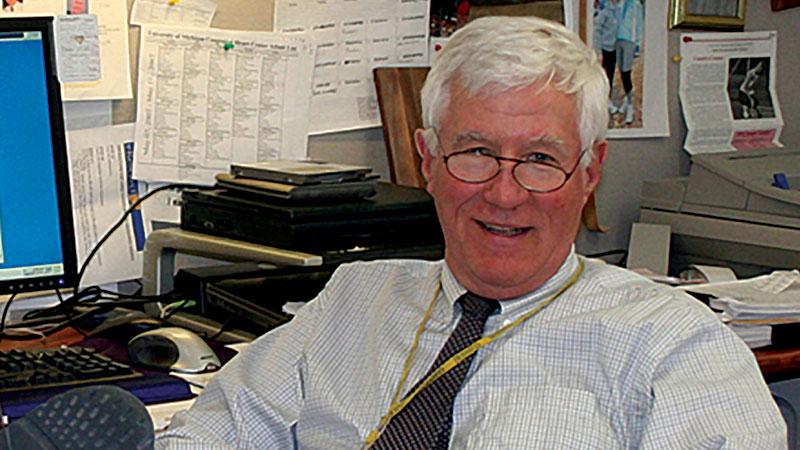
1991, Mac Dick
1991, Ann Dunnigan
I was president of the Peds EP society (which I think is what we called it then) so long ago, I hardly remember! To be honest, the most significant memory I have of the year I was elected is that my house burned down. And when I recovered from that, I realized that there was no instruction book that came with the president's job. I don't remember any major accomplishments - in the time I was president, communication between members was a major challenge. No email, and no texting which made it hard to get consensus among the officers.

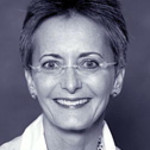
1993, Barbara Deal
1995, Jeff Moak


1997, Bert Ross
1999, Mike Silka
Reflecting back on my time as president of PACES, it’s really stunning how much has changed. I was part of the 6-year cycle of being elected in 1994, with 2-year intervals as Treasurer (we had minimal money), Secretary (not much to do or report on) and Vice-President (don’t recall dong anything). I took over as President of PACES almost co-incident with moving from OHSU to CHLA in 1999, so being a new division chief had taken up most of my attention. The HRS meetings (aka NASPE) were really quite different, and probably not exactly politically correct by today’s standards. The main events were the excesses of the evening meetings / outings sponsored by the device companies, e.g., going out on Ted Turner’s America Cup boat in San Diego or going up to Miramar for a fighter pilot tour (think Tom Cruise movies). There was also a priority to do “NAPSE golf” with John Kugler and whoever else we could get to join us. There are probably two noteworthy events – one was the first launch of the PACES website, which actually was quite an accomplishment in Y2K and the first discussions of genetics and arrhythmic heart disease with a talk by the late G. Michael Vincent, MD and the recognition that a new aspect of Pediatric EP was emerging that didn’t involve time in the cath lab doing ablations or devices.

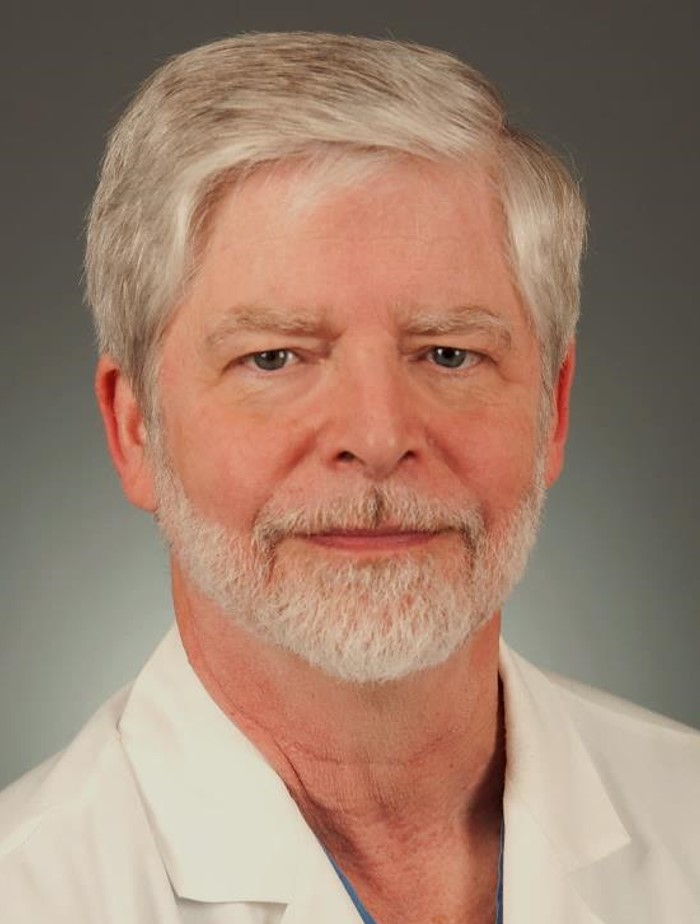
2001, Ed Walsh
I was elected to the executive committee in 1995. We served 2-year terms in ascending roles (Treasurer -> Secretary -> VP -> President). The Treasurer role was actually the hardest, not because of dues collection (most members actually never bothered to cough up the yearly $25), but because we had just started collecting $500 yearly checks from all participating institutions to support John Kugler’s RF ablation registry. The bookkeeping and appeals for payment checks was onerous, but we got it done.
My tenure as President ran 2001-2003. By that time the original RF registry had closed, and George Van Hare had us up and running with the NIH-supported PAPCA trial. We were meeting twice a year up until 2002 (at AHA and again at NASPE/HRS), but we were not attracting many members to the AHA session, so decided to focus on one big meeting at NASPE/HRS, and we’ve never looked back. I’m afraid my meeting organization style was not the most popular among the membership……I would only arrange a buffet meal with a cash bar. I suspect folks were glad to see my term end which greatly improved the party atmosphere at our annual gathering.
We accomplished some good things during my years as President. The original web site got off the ground thanks to Bert Ross, the first Pediatric EP training curriculum was published with Vicki Vetter in the lead, and I began petitioning the NASPE/HRS leadership to recognize our group’s position as the exclusive voice for the pediatric EP community. I also began pushing for a more formal certification process for our subspecialty. All we had at the time was the NASPExam for pacing and defibrillation which I strongly advocated, but I still felt we needed some sort of board exam for pediatric EP to parallel the rigorous process in adult EP. Sad to say, my efforts fell flat with the ABP and ABIM, but many years later I was pleased to see the IBHRE exam finally emerge as a quality marker for pediatric practitioners.
It was an honor to serve. Sorry about the cash bar.
2003, Jim Perry
When the EP Society was established in 1980, it was a loose group of leaders of this new field of pediatric EP. As a med student, I attended the Gillette & Garson Heart House EP course in the early 80’s, and saw that Tim Garson was getting people together, which I soon learned meant that a focus on food and wine consumption was a Society strategic goal. I’m happy to see that has been carried through our evolution. By the early 1990’s the deal was you were elected to the Executive group for a 10 year stint up the ladder. I recall we didn’t have a bank account, membership list, reliable dues, a legitimate (aka, legal) way to beg for industry support, and means for ensuring that the success of the recent Ablation Registry would spur more multicenter efforts from the group. We also needed a logical home for annual meetings and voted to move away from AHA. I arrived in San Diego from Houston in 1993, and as Treasurer the first EP Society bank account was set up in my Wells Fargo branch in Poway, California. The bank made me track down the original Pediatric EP Society incorporation document from Michigan (thanks, Mac!) before they would even give us an ATM card. The EP Society ablation registry paper was published in 1994 and I think that confirmed our potential as a force in the minds of many, and attendance at meetings grew and collaborations followed. When I became President, it was great that our VP was John Triedman, Secretary was George Van Hare, Treasurer was Rich Friedman, and Past President was Ed Walsh. We put together ideas for standing committees on a host of topics, like training guidelines and studies beyond PAPCA and then in following years JT, GVH, and Rich brought about some great foundational structural changes that allowed PACES to grow with (actually, ahead of) the times.


2005, John Triedman
I don’t remember if I was last or next to last of PACES Presidents to serve for two years. When elected to exec committee it was almost a decade of waiting in line, with real responsibilities only in the last couple years before you served as President. Definitely, I felt like the chef, waiter and dishwasher as the Pediatric EP Society was a much smaller but growing organization. I definitely recall that a regular part of the calendar those two years was organizing in Denver and Boston the actual meeting room, speaker and menu for the annual business meeting, and trying to scratch up the funds to support it between meeting with hotel event managers.
There were some notable events during my tenure in the executive committee and as President, which I smoosh together because at 15 years distance and given my continuous involvement with PACES leadership over several years things tend to get conflated. These included responding to FDA black box warnings, celebrating the outcomes of PAPCA (especially) and many other clinical research projects as a group, building a durable relationship between HRS and rebranding as PACES. Overall, I had a sense of rapid growth and increasing self-organization of the Society, even during the two years I watched it as President. The revision of the bylaws to make our governance both more inclusive and more nimble was huge in that regard - I was Past-President by the time it went into effect, but it was much needed. However, what I most remember about my role in PACES leadership is how emotionally involved I got with the identity of our group, and how much I enjoyed it. I think it was Rich Friedman who noted (loudly) on my behalf “I’m all verklemmt, talk amongst yourselves” when I needed a moment to regain my composure at my President’s farewell speech. A year or so later I happily made an ass out of myself exercising my motivational speaking chops and working the PACES membership to contribute charitably to HRS, while writing onstage an overly large check to the Society to set an example. Still undecided as to whether that went well or not but no regrets!!
The nice thing about PACES is it’s still here, an active and growing organization, and although I am much more on the periphery, I still feel entirely a part of it. A bit strange to be in the history books now!
2007, George Van Hare
I was elected to the presidential track back when we handed out paper ballots and collected them at our annual meeting, coincident with AHA. I suspect a few friends engaged in ballot box stuffing. In any case, at that time the president served two years, after an initial 6 years, 2 years as Treasurer, Secretary, and President-elect. One memory was when John Triedman and I met with James Youngblood and Bruce Lindsay (HRS CEO and HRS President respectively) to discuss the relationship between our two societies. At that time, there had been discussion about possibly allowing ourselves to be absorbed into HRS, as we recognized that our resources were few and we had no administrative support, limiting our ability to get anything done (this was before others hit upon the clever strategy of increasing dues). On the other hand, there was quite a bit of consensus around the desirability of remaining independent. All of this led directly to the first PACES Strategic Planning conference in 2008 held at Fort Mason in San Francisco just before that year’s HRS meeting. One of the outcomes of that process was a clear consensus around remaining independent but developing a strong relationship with HRS so that we could be viewed as the single authoritative voice for children's arrhythmia issues. I personally had the benefit of having been asked to serve on the HRS Board of Trustees and at that term overlapped with my term is president and so I found myself an ideal position to advocate both for the status of our society as well as for children's issues within HRS. Other notable events: the first SADS Young Investigator award in 2008 and Ed Walsh winning the HRS Distinguished Teacher award that year. Finally, not during my PACES President years, addressing the PACES membership at the annual business meeting as the incoming HRS President may be the high point of my career.
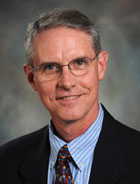
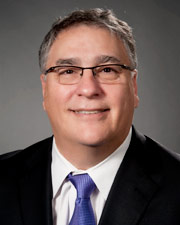
2009, Rich Friedman
2010, Phil Saul
My time as an Officer and President at PACES was one of great change and development in the depth and breadth of our Society’s mission. I was first elected as an Officer in 2005 under the “old” system in which we had 4 Officers, each serving 2 years in one role, then moving up to the next level, and ending as President, for a total of 8 years as an Officer and 2 years as Immediate Past President – 10 years total! However, recognizing both the limitations that put on how many members could participate in Society leadership and the burden on the elected Officers, in 2008 we changed the By-Laws to have 1-year terms. Then between 2009 and 2010 we modified the officer duties further to include a President and 3 Vice Presidents – Finance, Communications and Research, each of whom served for 3 years in a single role before becoming President. An Executive Committee was also established which included the 4 Officers plus the 2 immediate Past Presidents. Finally, a Board of Directors was established primarily for the purpose of fiscal oversight, and included the President, the 2 Past Presidents and the CEO of the Heart Rhythm Society.
Combined with improved fundraising and finances to support PACES activities, these administrative changes put us in a good position to utilize the resources of our membership and be more nimble as a Society. In fact, the most significant changes during my tenure were related to utilizing the energy and desire of many members to be personally involved in PACES. The By-Laws were changed to allow as many ad-hoc committees as the Executive Committee saw fit, leading to the formation of 5 new committees with a total inclusion of 77 members in our first iteration, representing more than 20% of our then 350 strong members. These included following committees:
- Guidelines Development (to produce PACES led clinical guidelines)
o 1st Chair - Mitchell Cohen, plus 11 members
o 1st document – Asymptomatic WPW published in Heart Rhythm 2012
- Guidelines Review (to review documents PACES asked to endorse)
o 1st Chair - Anne Dubin, plus 15 members
- Training & Certification
o 1st Chair - Ed Walsh, plus 11 members
- Research & Grants
o Chair to be VP for Research, Charlie Berul, plus 11 members
- Multicenter Pediatric and ¬Adult Congenital EP Quality (MAP-IT) (to establish a database for pediatric catheter ablation)
o 1st Chair - Stephen Seslar, plus 25 members
The committees allowed for every PACES member who volunteered to be included in some working group, which was a source of great satisfaction for the members, but perhaps more important a source of great productivity for the Society – many hands make light (and more!) work.
In addition to expanding the work force of PACES, in 2009 we also began a number of programs to promote participation and research among our younger and future members. We established the Will Webster and SADS Research Award Competitions, focused on clinical and channelopathy-based research, respectively, and created a travelling scholarship for an international member in need of support.
By the time I finished my tenure on the Executive Committee in 2013, PACES had been transformed from a relatively small Society, run by a small group of “senior” pediatric EP docs, focused mostly on U.S. based pediatric EPs who got together once a year for some socializing and self-congratulations, to a vibrant international Society including trainees, Affiliated Professionals, researchers and of course still EP docs. We would still get together once a year to have some fun and pat ourselves on the back, but it evolved to include hundreds of members from all the categories above. The membership and productivity of the Society has only grown and evolved since, a nice testament to the efforts so many of us made between 2005 and 2013. I am honored to have been able to play a role.

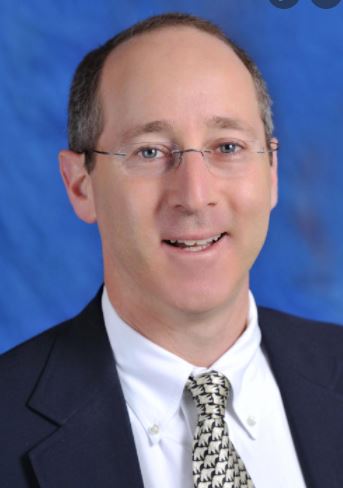
2011, Peter Fischbach
I had the good fortune of being elected to the PACES board in 2007 and served as the President of the society for the 2012-2013 term. During those years, interest in the society was growing rapidly and we were able to shorten the terms of board members to allow greater participation from the members. I remember attending a Pediatric EP society meeting held during the annual NASPE meeting in Washington DC as a fellow in the late 1990’s. The small conference room seemed relatively empty at the time. Fast forward to our meeting in 2013 when we filled a large hotel ballroom in Denver and the meeting’s agenda was packed with ongoing projects and initiatives. During my term we worked hard to broaden and increase our membership including AP’s and non-US pediatric EP’s who are so important to the field. We also worked to strengthen our bond with HRS and began a process for producing jointly branded clinical guidelines. It was exciting to watch the organization grow, and I remain amazed at the collegial and welcoming spirit PACES has cultivated allowing for thoughtful and well-organized educational programs and serving as an important driver for impactful multicenter research initiatives.
I have had the privilege during my career to learn from the pioneers in pediatric EP and watch as a new generation of smart, dedicated, and creative pediatric electrophysiologists continue to drive the field forward. PACES remains my favorite professional organization and I always eagerly anticipate our annual gathering to see old friends and make new ones.
2012, Susan Etheridge
I was Treasurer for what felt like 20 years. I think it was 3. I was in the era of paper billing and collecting cash, checks, coins, yen, euros, loonies. I would collect dues at HRS every year and had to come prepared with a locked cash bag to carry it all around in. Thankfully, the Europeans and Asians would usually pay me in American money but not always the Canadians. My bankers hated me. Also, as a result of billing by paper invoices I knew everyone’s address.
One year when I was Treasurer, Phil Saul was president of PACES and he taught me a lot about how to control costs at the annual business meeting. He is good at this. He had me mandate that the waiters do not refill the wine glasses unless asked and sometimes not even then.
Happily, when I was president of PACES, George Van Hare was pretty high up on the HRS executive board, Treasurer I think. This helped me a ton. He had my back. He taught me how to navigate the HRS powerful and important in a way that got what we wanted for PACES but did not make everyone in HRS hate me.
When I was President, we published the ACHD consensus document. We eventually got credit card billing. We started a run of women leaders in PACES that has continued.

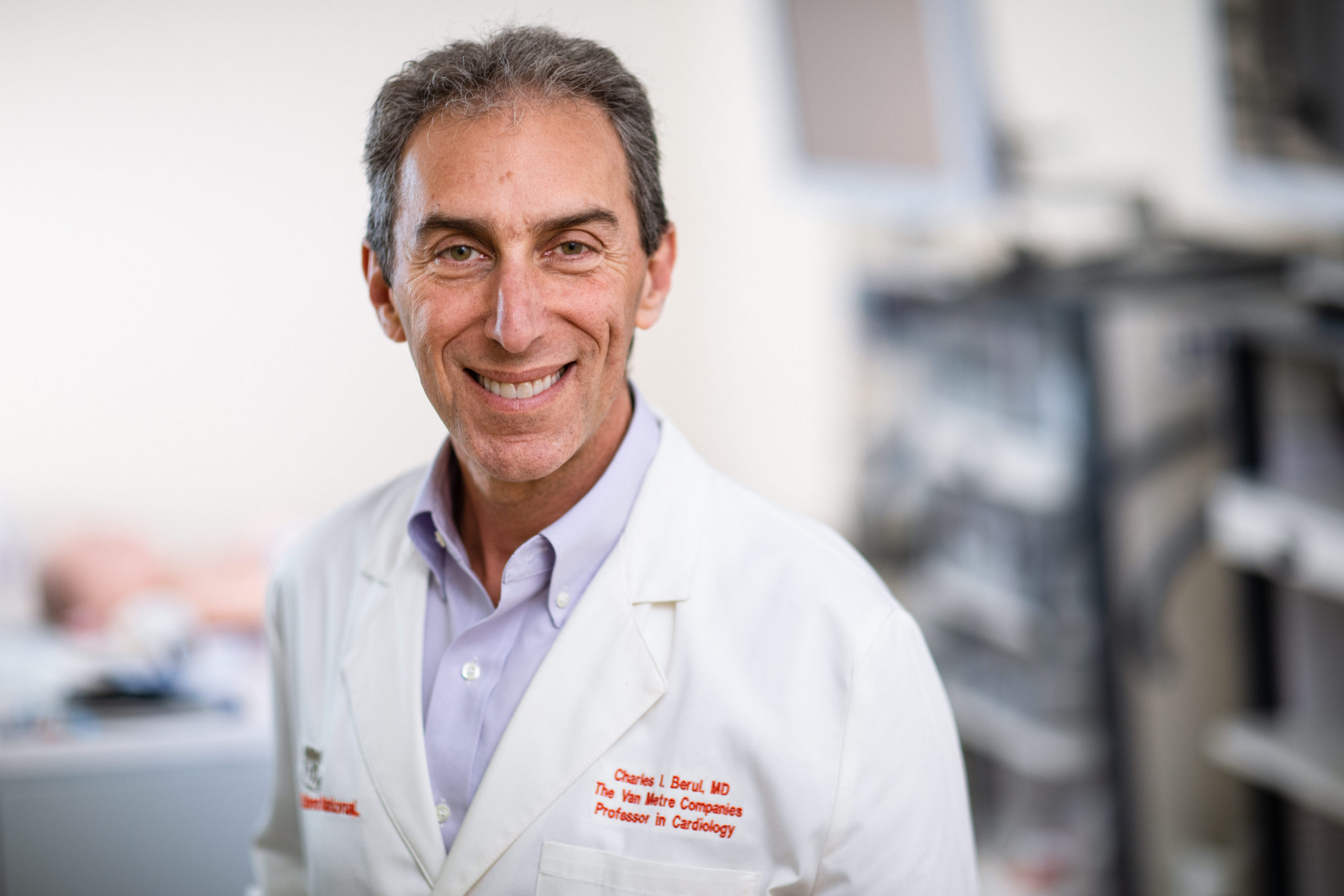
2013, Charlie Berul
Serving on the PACES Executive committee was truly one of the most satisfying administrative societal roles that I’ve had the privilege of participating with my colleagues. I’m honored to have been chosen by a vote of my peers. It is amazing how fast the Society has grown – from a dozen people sitting around a large oval table to now over 300 participants!
During my tenure as PACES president, we expanded the committees to allow more interested people to become involved with various aspects of volunteering within the organization. We became more closely aligned with HRS and recognized as THE organization for pediatric and adult congenital rhythm issues. We also created a one-time joint donation solicitation where we awkwardly handed out envelopes at the tables, with donations split 50/50 between PACES and HRS.
I fondly recall calling Paul Gillette to let him know that he won the PACES Lifetime Achievement award (I’m not sure if this was when I was VP for Research), and that I was mailing him the plaque in January. He replied “why, don’t you think I’ll make it ‘til May?” which was prescient as he didn’t! I’m so glad that I told him early so that he knew that we appreciated him and recognized his importance in pediatric EP (and he got to actually see his plaque!). At the PACES meeting, his award was accepted by his wife Vicki Zeigler on his behalf, who then started the Paul Gillette Memorial PACES Annual Research Award. During my presidential year, Dr. Mac Dick was the Lifetime Achievement awardee, with an amusing presentation by Ian Law and Pete Fischbach highlighting Mac’s long career.
2014, Ian Law
For reasons I still cannot quite comprehend I was elected to be on the PACES Executive Committee and subsequently served as President for the 2014-2015 term. Fortunately, I was surrounded by an extremely competent Executive Committee who pointed me in the right direction and corrected my frequent missteps. The start of my presidential year was highlighted by a strategic planning session held in San Francisco and at the 2014 PACES annual meeting I was honored to present my mentor and good friend Macdonald Dick II with the PACES Lifetime Achievement award. During my tenure on the Executive Committee we added a VP for Associates position on the Executive Committee, Brynn Dechert, who subsequently championed the addition of educational content to our PACES website. We also added an International Executive Committee member, Thomas Paul, during the year of my presidency. Our PACES website was brought into the 21st Century, which enabled better tracking of our membership and collection of annual dues, and our by-laws were updated. In 2014 our PACES membership numbered 428 (92 international). As a society we published the “PACES/HRS Expert Consensus Statement on the Recognition and Management of Arrhythmias in Adult Congenital Heart Disease” and the “PACES/HRS Expert Consensus Statement on the Evaluation and Management of Ventricular Arrhythmias in the Child with a Structurally Normal Heart” in 2014. We also organized the writing group for the “PACES/HRS expert consensus statement on the use of catheter ablation in children and patients with congenital heart disease: Developed in partnership with the Pediatric and Congenital Electrophysiology Society (PACES) and the Heart Rhythm Society (HRS). Endorsed by the governing bodies of PACES, HRS, the American Academy of Pediatrics (AAP), the American Heart Association (AHA), and the Association for European Pediatric and Congenital Cardiology (AEPC)” which was subsequently published in 2016.
All in all, my time on the PACES executive committee and year as PACES President was one of the highlights of my academic career, leading to numerous lifelong friendships and collaborations, which in large part is what PACES is all about.


2015, Kathy Collins
During my time on the PACES Executive Board (not just the 1 year of President), the highlights were:
(1) Expanding PACES from a North American focus to an International focus. PACES had always been welcoming and ‘inclusive’, but we expanded that and created a position on the Executive Board for an International member. HRS talks were expanded to include issues pertaining to challenges to care in countries outside of North America.
(2) PACES Lifetime Achievement Award – The executive team was so excited to begin awarding a Lifetime Achievement Award to honor the ‘Greats’ who built and continued to strengthen the field of Pediatric EP.
(3) Research/Scholarship – Research in Pediatric EP had largely been single center experience type publications. There were also the several center studies which started gaining favor as Peds EP colleagues would pool their experiences to create a better publication on the basis of more patient numbers. During my time on the Executive Committee, a lot of emphasis was given to PACES – sponsored or at least advertised research studies – and the number of publications from multi-center studies increased greatly.
(4) PACES as a society – During time on the Executive Committee, we hosted a second Strategic Planning Session to focus our group and to address challenges of financial security, highlight research approaches as above, and truly outline the question of Where is PACES headed in the next 5- years 10-years?
2016, Shu Sanatani
In the new structure of PACES leadership, I was finally ready to run for Vice-President of Research in 2013. I had been presenting my low-impact research projects for years to the group of educated hecklers. To hear my name announced as the next VP Research was one of the biggest moments in my professional life. Dr Ian Law and others had set up the new structure very well, with regular Executive Comittee meetings, and a systematic approach to things. By the time I became President in 2016, it was mostly a matter of not screwing up an amazing system, supported by a wonderful group of people. Although George Van Hare claims some Canadian blood, I did feel like the first fully Canadian President, which was a huge honor. Some of the things I am most proud of having been part of: working with the family of Paul Gillette to set up the terms and adjudicating the first 3 years of the eponymous research award; establishing an expanded org chart that included an education committee; and starting some video files of PACES Greats! PACES is still the best group of people in my professional life.

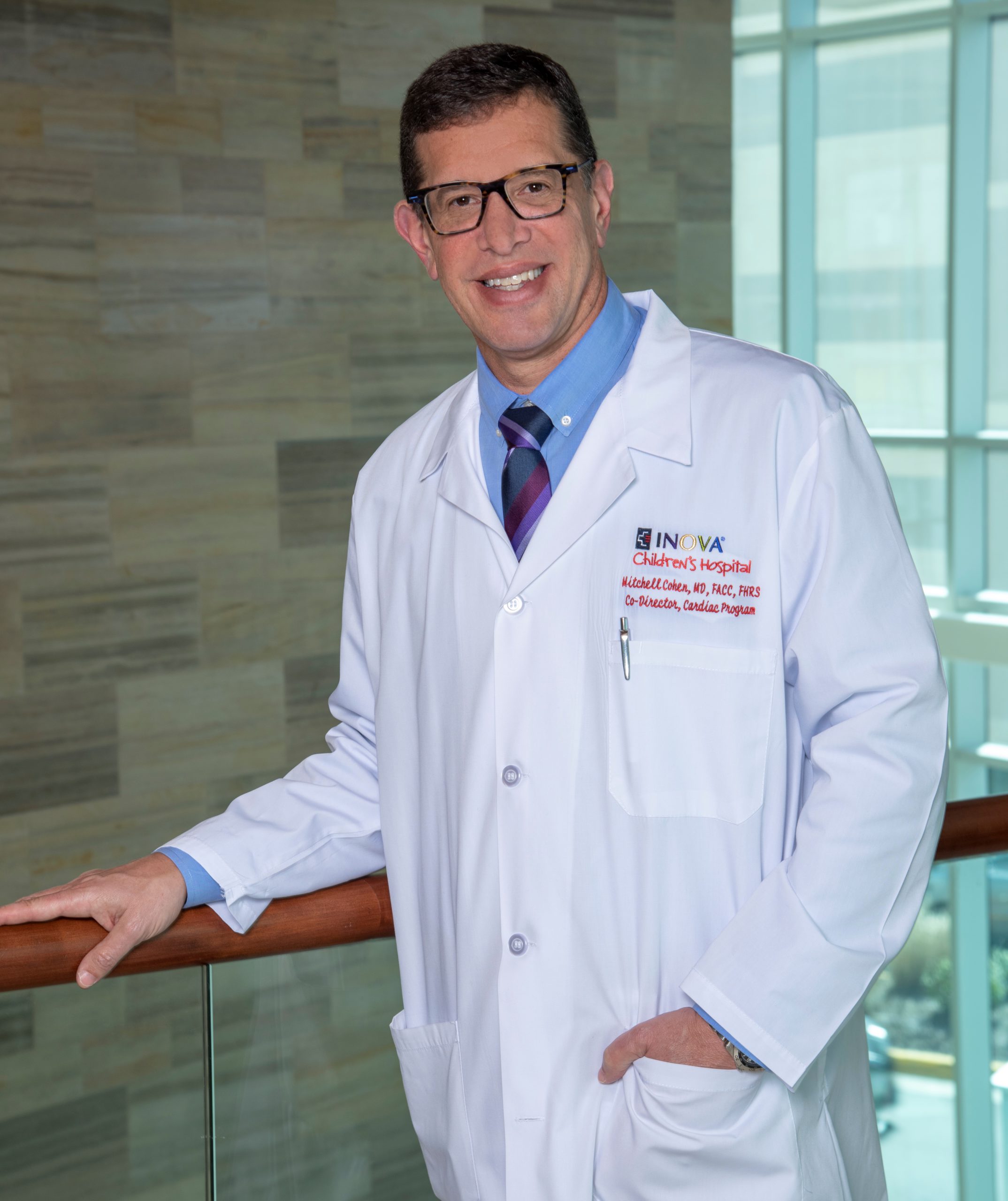
2017, Mitch Cohen
When I went to my first PACES meeting in 1997 there were about 27 people standing around a bar with a few appetizers (not sure who was really picking up that tab as we didn’t seem to have two nickels to rub together). I certainly was in awe, and a little intimated, standing beside Gillette, Garson, Walsh, Van Hare, Vetter, Deal, Saul, Dick, Friedman, Wolff, Kugler, Silka, Rhodes, and Benson. Looking back now, each of them welcomed me and were always there to lend advice and support a junior NASPE (ha yes NASPE before PACES) member. Fast forward two decades, I was elected to the presidential track in 2014 and served as PACES President in 2017. Ian Law welcomed me to the EC that night with a beer and notes on a soaked bar napkin of what he was hoping I might accomplish over the next few years. Prior to my time on the EC, I spent 5 years on the HRS Scientific Clinical Documents Committee (thanks to George and Phil) a position where I learned a great deal about how documents are conceived, generated, and published. That process always reminded me of the old School House Rock show “How a Bill Becomes a Law”. Over the 5 years I was on the PACES EC there was an explosion of guidelines and consensus statements either originating from within PACES or at a minimum having pediatric representation on guidelines related to children. Documents included: Management of Asymptomatic WPW, Evaluation of Ventricular Arrhythmias in the Structurally Normal Heart, Management of Arrhythmias in ACHD, EP Lab Standards, Remote CIED Monitoring, Syncope, Catheter Ablation, and Sudden Cardiac Death.
However, the thing that I am most proud of during my presidency was how much we expanded PACES into an international society and sought representation on the EC and committees from all over the globe. PACES is no longer a North American Society. It has a global image and brand and seeks to be the international voice caring for children and adults with CHD who have arrhythmias. Our colleagues outside of North America are doing great clinical work and research and serving as advocates and ambassadors for PACES. PACES is a global well-oiled society with a vision and a mission that is far-reaching. I am super proud to have played even a small role in that and I am excited to see what our junior colleagues will accomplish in the next decade. With 20:20 hindsight, I feel pretty good about checking all the boxes we did that night on a Sam Adams napkin
2018, Bryan Cannon
I was elected to the presidential track as Vice President of Finance. We had just acquired an electronic database so members could pay their dues online. Before this, Susan Etheridge and Kathy Collins would bring a giant bag from the bank and collect cash and hand out paper receipts at the annual business meeting. The first year that I was Vice President, we had leftover money in the PACES account for the first time in history (due to the increase in dues for members). Our electronic account was subsequently hacked with multiple payments going to non-physicians around the world including a $600 purchase of cosmetics from Italy! All money (except the cosmetics) was recovered, and the PACES bank account was returned to its original positive balance. During my tenure, we tripled our international membership to include multiple members from all continents and the majority of countries with a pediatric electrophysiologist. We offered the international travel award and continued to put our footprint on guideline papers involving pediatrics.

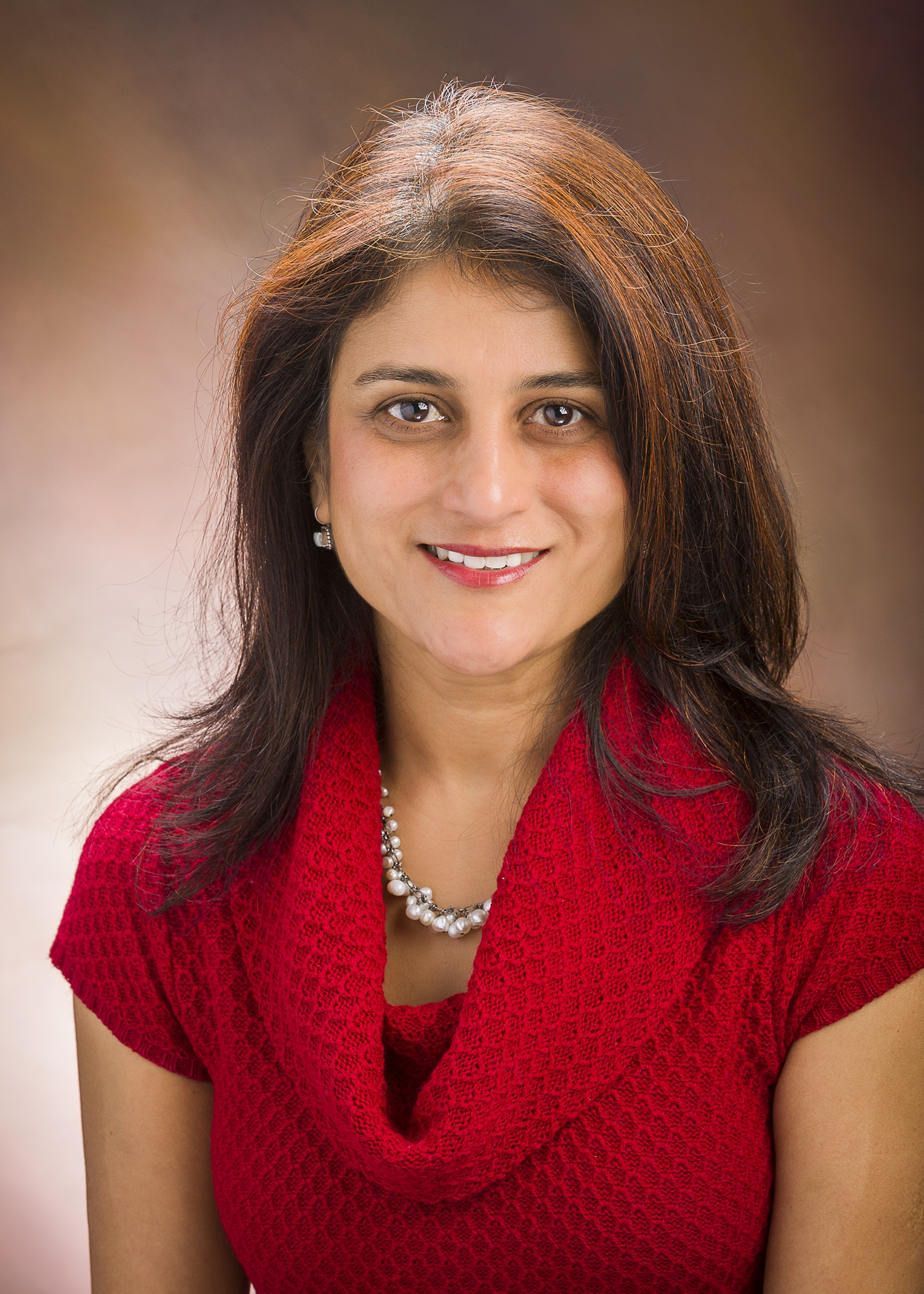
2019, Maully Shah
Following a three-year term as elected VP of PACES Research, I became PACES President on May 9th , 2019. My acceptance speech given in San Francisco, CA ended with mother’s day greetings to our members. Unbeknownst to me then, the age-old tradition was coming to an end and it was the last time that the HRS scientific sessions would coincide with the sacrosanct Mother’s Day Weekend. During my presidential year, we welcomed 2 new Vice Presidents and nominated 6 new chairs to PACES committees. Everyone was enthused and energetic and the excitement was palpable. People were buzzing with new ideas and action. We laid down 1) plans for a new PACES website, 2) created an academic membership database, 3) commenced the update of our by-laws, 4) forged a multi-center research alliance with ISACHD, 5) negotiated a journal partnership with Heart Rhythm, 6) galvanized our social media Twitter platform , 7) endorsed an ad hoc Women in PACES (WIP) committee and 8) approved the development of the first independent PACES document: Expert Consensus Statement on the indications and management of cardiovascular implantable electronic devices in pediatric patients. By fall, the EC efforts were laser focused on organizing the 2020 PACES pre-HRS conference in San Diego, CA. Jim Perry had secured a beautiful conference room at the Scripps Institute with a panoramic view of the Pacific ocean. Grant submission deadlines were announced, the educational program was curated, invites were sent, sponsorships were accepted, menus were set, wines were hand-picked, caterers were paid, and the inaugural PACES 5K race was ready to roll. Simultaneous to these efforts, was the news around the world of hundreds of thousands of people dying of a mysterious flu like illness and on March 11, 2020, WHO declared COVID-19 a global pandemic. Amidst chaos, uncertainties and divergent prophecies, on March 13, 2020 PACES became one of the first societies (along with ACC) to take an unprecedented and radical step to officially pull the plug on its in-person educational programs in order to prioritize the safety of its members and ensure a focus on crucial clinical services. I distinctly remember calling Andrea Russo, then president of our partner society HRS, informing her of our difficult decision. She in turn called HRS CEO Pat Blake but they initially remained optimistic and deferred their decision to cancel HRS. Soon after, the world shut down, countries sealed their borders, and most U.S. states were in lockdown. A month later, HRS cancelled its in-person scientific sessions. I ended my term as PACES president on day # 52 of the lockdown with a formal request to the Executive Committee to buy a PACES zoom account. June 5th, 2020 marked the first PACES Virtual Business Meeting and virtual handing over of the presidential gavel. The rest, as they say is history.
2020, Seshadri Balaji
My term as Vice President for Administration started in May 2017. It was a great learning experience to see the workings of the executive group and the President. The years up to my Presidency were pretty undramatic.
And then just before my year as President started in May 2020, the COVID-19 pandemic hit and the world changed in a hurry. Maully Shah was the President with the unenviable task of making big decisions. She and the EC immediately cancelled the annual meeting, indeed ahead of HRS. We quickly purchased a Zoom license and went ahead with a fully virtual annual meeting in June 2020. Indeed, from that point on, all our meetings for the year (the Research meeting in July 2020 organized by Price Kannankeril, QI meeting September 2020 organized by Ronn Tanel and Doug Mah, a combined meeting with the Project ADAM group in October 2020, a virtual Advancing the Field (done with the help of our SADS partners) in December 2020 organized by Drs McCanta, Escudero and Trivedi, and a Women In PACES meeting in July 2020 led by Maully Shah) were all virtual.
The main things that happened during the 2020-2021 were:
- The new website. Maully had initiated the search for a new website provider, and it fell upon my shoulders to decide which specific one to go with and how to go about it. The website committee, composed of a younger group of EPs and led by Shashank Behere from Oklahoma did a fantastic job in helping the EC and me with the decision and the specifics.
- We made a deliberate and explicit push to make our representation be more equitable to minorities, women and to younger colleagues. The Guideline Review and Development (GRAD) Committee were given a template on criteria to look at before recommending people to sit on committees, write guidelines, and represent PACES in other forums, all in an effort to be more transparent and more inclusive.
- Because of the loss of face-to-face meetings, I took it on myself to write some blogs and to invite discussion over the new website on issues faced by the PACES community.
- We expanded our Twitter presence with the help of Brad Clark.
- Maully Shah and Mike Silka began the CIED document with heavy participation by many of the EC.
- As a side effort, I began a monthly international case-based teaching webinar which was initially called PACES-ECHO (ECHO standing for a program from University of New Mexico called Extension for Community Health Outcomes) which was later renamed Children’s Heartbeat. This program was initially developed under the umbrella of PACES, but financial issues forced us to change it into a program under the auspices of my university (OHSU).
- For the May 2021 annual meeting we again went virtual but with a small hybrid presence for the few members attending the HRS at Boston.
- Financially we did well. The absence of in-person meetings helped us save money. The new website was more expensive than the old one but appeared to be worth the extra outlay with better functionality.

